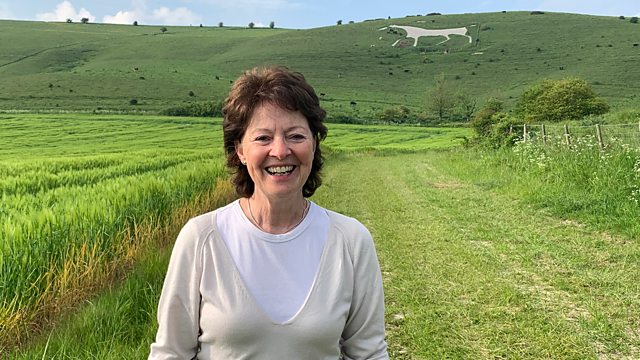Wiltshire's white horses
Helen Mark explores the chalk hill carvings of Wiltshire - the county which has more of them than anywhere else, including eight white horses.
Wiltshire has more chalk hill figures than any other county in the UK, with no fewer than eight white horses carved into its rolling hills. They're all slightly different, and were carved into the hillsides at different times, often to mark an important occasion such as the coronation of Queen Victoria. In this programme, Helen Mark visits some of them - from the oldest and probably best-known one at Westbury, to the much smaller and less prominent horse at Broad Town near Swindon. She finds out about their history and significance, and asks why they became so popular in the 18th and 19th centuries. The tradition continues into the present-day, with the most recent horse, at Devizes, created in 1999 to mark the Millennium. The white horses are a key feature of the Wiltshire landscape, and have become an unofficial emblem of the county.
The horses have to be regularly maintained. Left unattended, they would gradually revert to nature, become overgrown with weeds and lichen and simply disappear. In Broad Town, Helen meets up with a team of volunteers who are spending their Sunday morning perched on a steep hillside, weeding and putting fresh lime powder onto their horse, to keep it white and visible.
As well as its horses, Wiltshire is also home to carvings with a military connection - in the shape of regimental badges and insignia. There's also a map of Australia, a YMCA logo, and even a giant kiwi. Helen visits some of the military carvings at Fovant near Salisbury, and finds out how they were created by soldiers stationed at training camps in the area during the First World War. She discovers that they're still important to the county today, more than a century on.
Produced by Emma Campbell
Last on
More episodes
Previous
Broadcasts
- Thu 6 Jun 2024 15:00大象传媒 Radio 4
- Sat 8 Jun 2024 06:07大象传媒 Radio 4
Podcast
-
![]()
Open Country
Countryside magazine featuring the people and wildlife that shape the landscape of Britain


